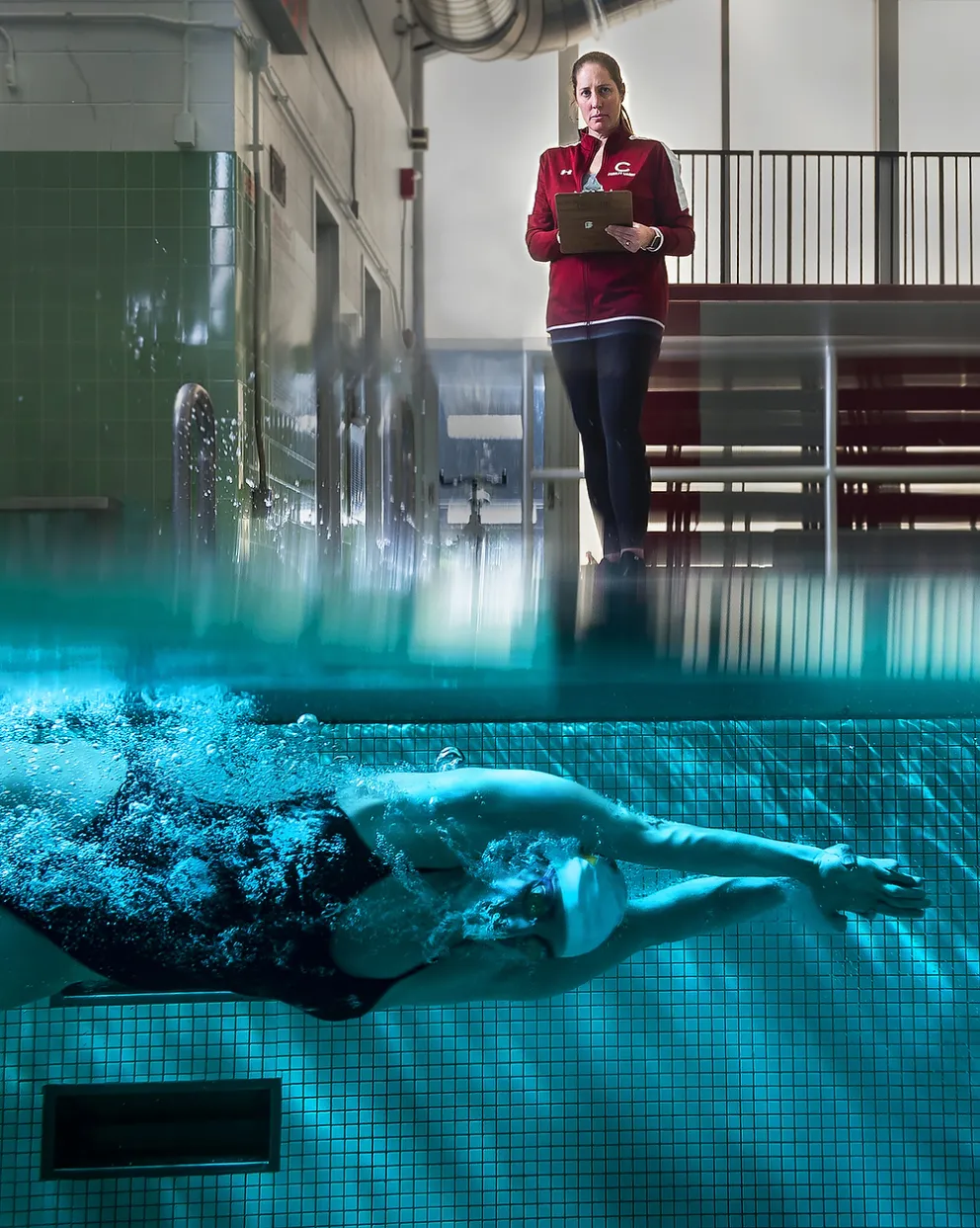
(text and photo above by Mark DiOrio) Mark DiOrio has been University Photographer at Colgate University and a UPAA member since 2016. He has a BFA from Purchase College (SUNY) and a masters in photography from Syracuse University. He worked at newspapers for 11 years before being hired at Colgate. His People and Potraits category photo “Circadian Rhythm of a Swimmer” was voted Best in Show in the December 2019 Monthly Image Competition.
Quick tech stuff: Camera, focal length, exposure data, lighting used (if any):
• Nikon D4s
• Nikkor AF-S 24-70mm 2.8 (gaff taped zoom ring @ 28mm on MF)
•1/250 @f9, ISO 320
•(2) White Lightning X1600
Assignment or found/self-assigned? Any unique logistics in making the photo? What sort of post-processing (or not)?
BACKGROUND:
The creative staff for Colgate Magazine and I had been taking about cover possibilities for the magazine for several weeks. There was a feature about an Associate Professor of Biology, Krista Ingram, who studies circadian rhythms of swimmers and athletes. We decided to photograph her both in the gym and in the pool with student athletes and I got the idea to do a portrait of her where the camera was half submerged below the water line to show the swimmer making laps.
HARDWARE:
I posed a question about photographing in a pool to members of the UPAA Facebook page to see how many had done similar photos before and what kind of equipment to use for it while still keeping a limited budget in mind. In the end I ended up buying an Ewa-Marine soft camera housing because it was cheaper than buying a bubble and I had difficulty finding a place where I could rent one that would enable me to trigger external strobes.
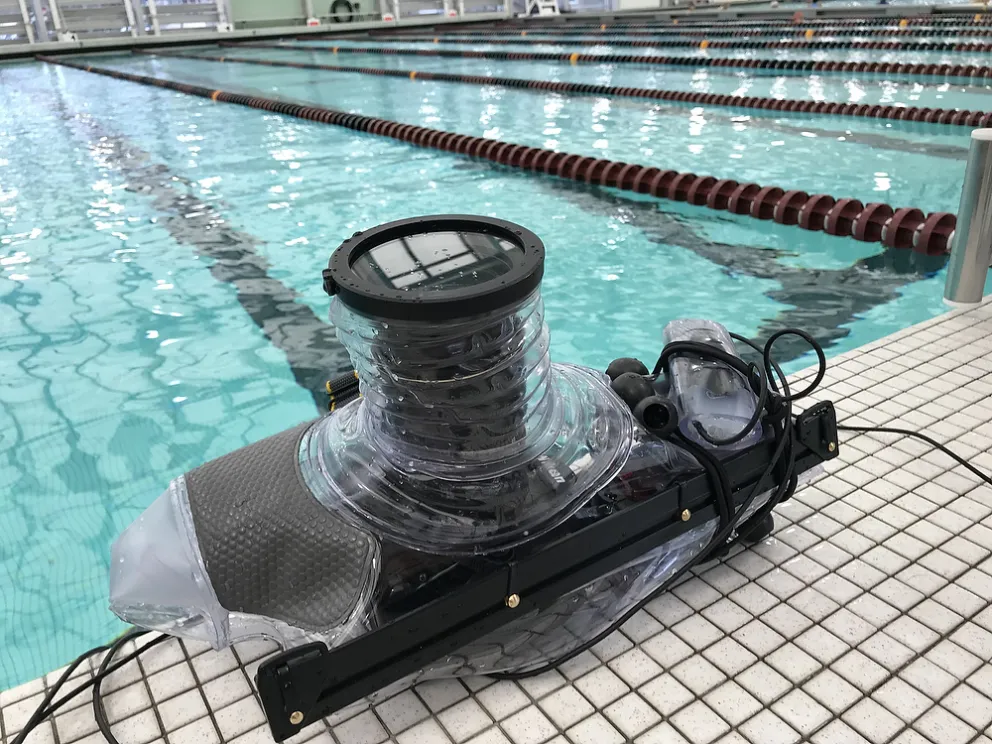
(photo by Brian Ness) The Ewa Marine housing
The Ewa has enough internal space to attach a Nikon Speedlight to the top of the camera and because it's a clear housing I could trigger (2) White Lighting X1600 monoheads using (2) peanut optical slaves that I sealed in a clear piece of tube with RTV silicone to keep the water out. The peanut slaves with 30' sync cords sealed in the tube were then attached to the Ewa housing where the speedlight could trigger them. I would have tried Pocket Wizards but thought that if the housing is under the water they would not be able to send the radio signal to trigger the strobes.
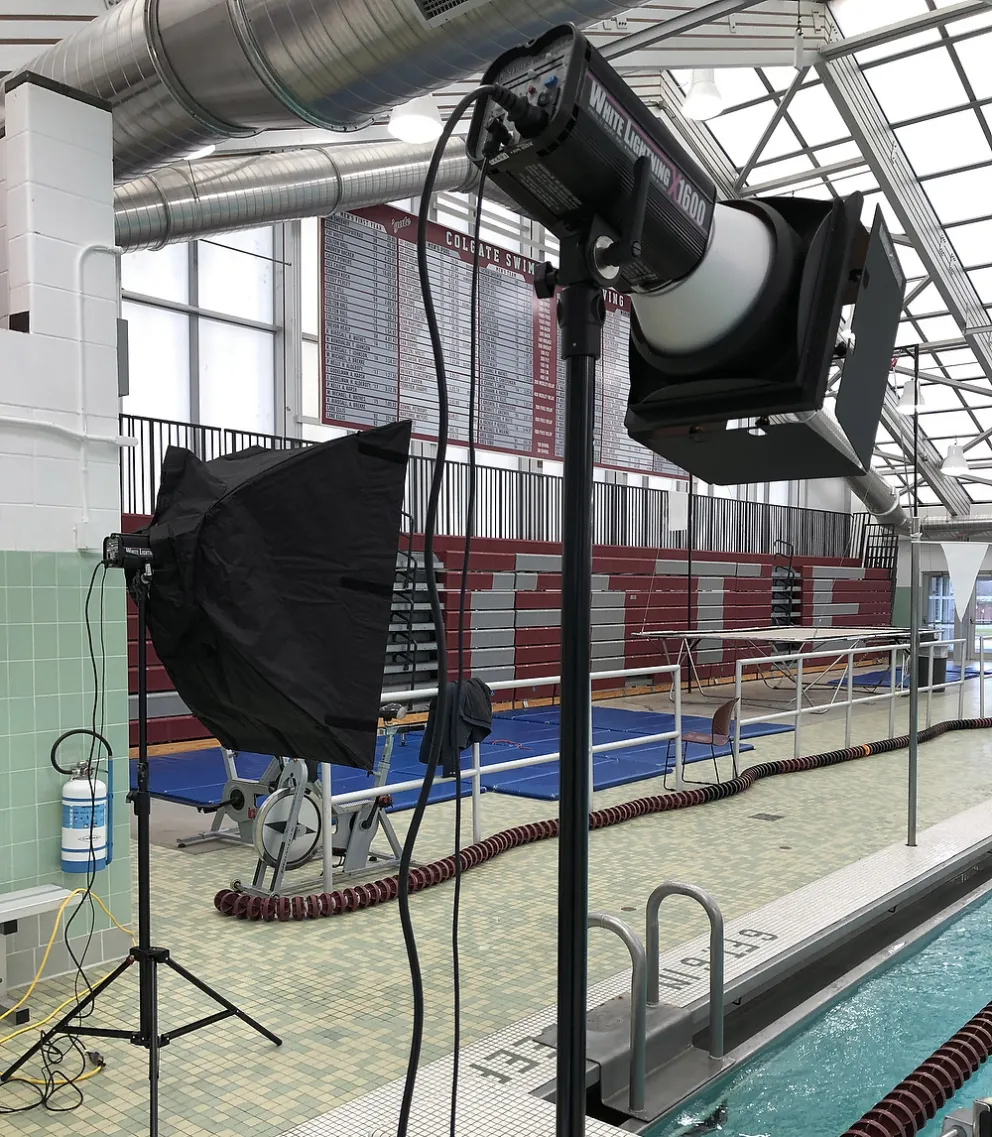
(photo by Brian Ness) A hybrid optical slave/hard wire solution proved effective to sync the strobes. Hmmm...Electricity...water...what could possibly go wrong?
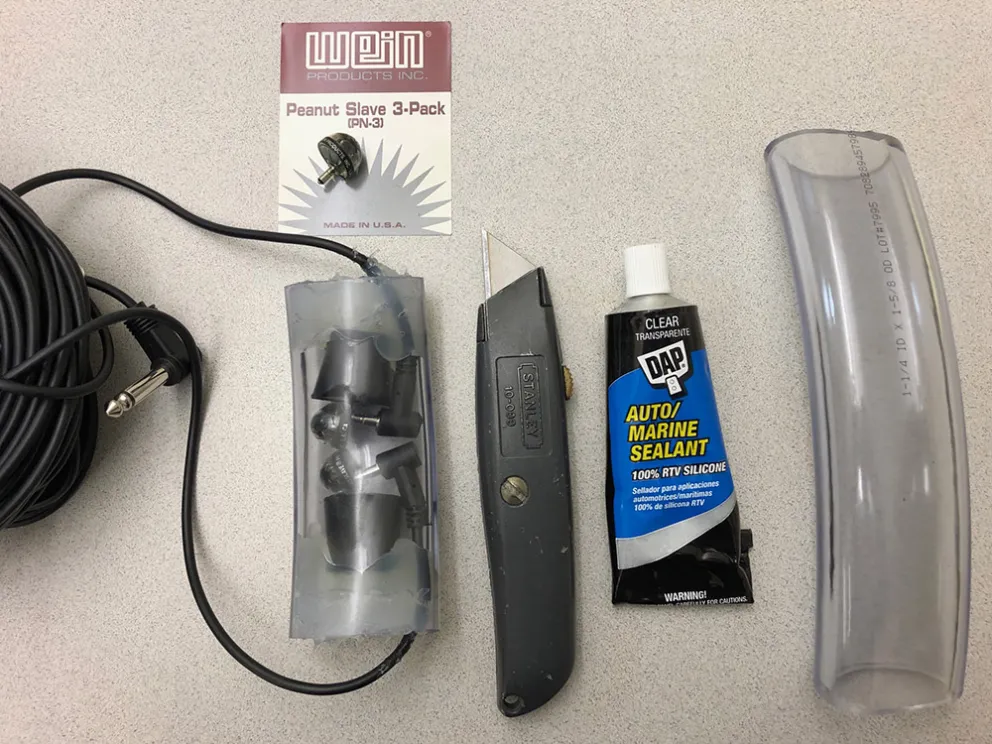
(photo by Mark DiOrio) The ingenious DIY slave idea detailed.
Was there an easier way to do all of this? I'm sure there was but it was also something I haven't done up to this point.
THE SHOOT:
The shot was far more difficult to pull off than I had thought. There were three afternoons of trial shoots to find the challenges beforehand and remedy them before the day of the shoot.
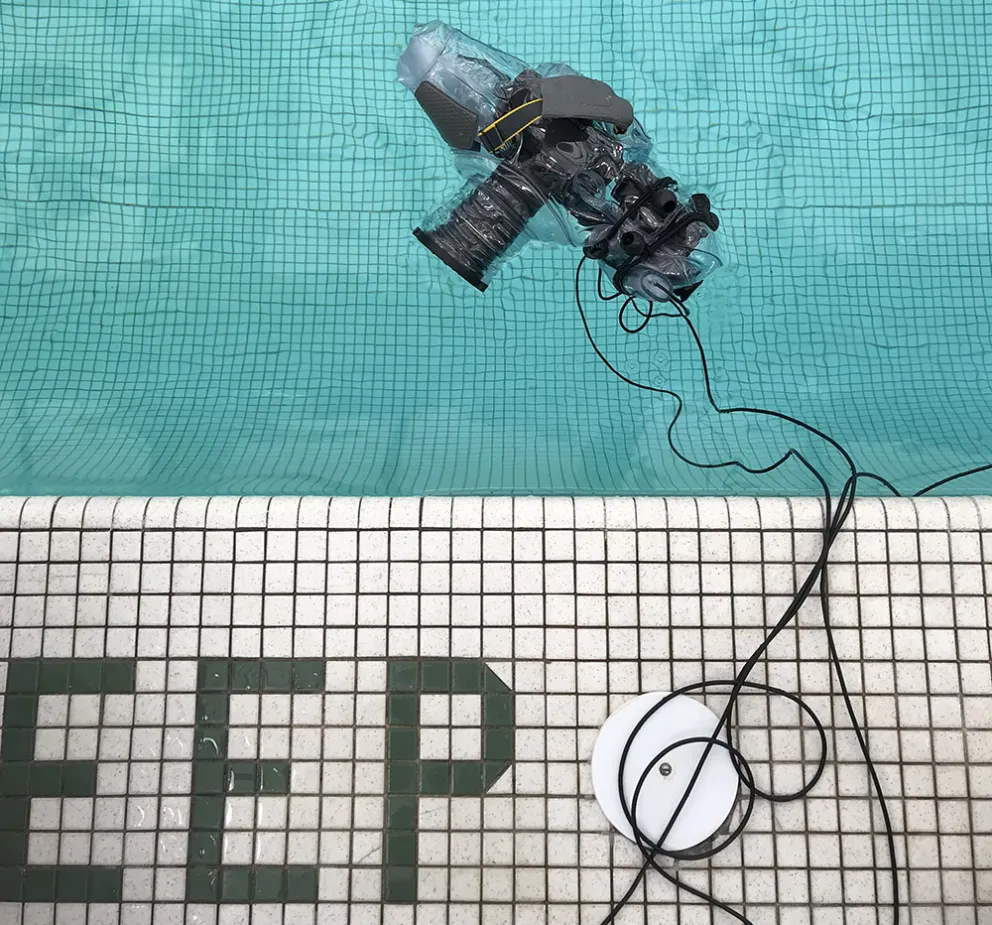
(photo by Brian Ness) "Jumping in the deep end" was not just a metaphor on this shoot!
First, I had to find a way to float while holding 7+lbs of camera gear. Once I attached a floatation device to my waist, the underwater jets in the pool caused me to drift from my spot. This was bad not only for composing the portrait but also because I didn't want the sync cords to be pulled from the rear of each strobe. I had to hang my arms over a hard plastic swim lane divider and wrap towels around it so it wouldn't cut into me. Another issue was that I couldn't see adequately through the viewfinder of the camera so I had to keep the camera in live view the whole time.
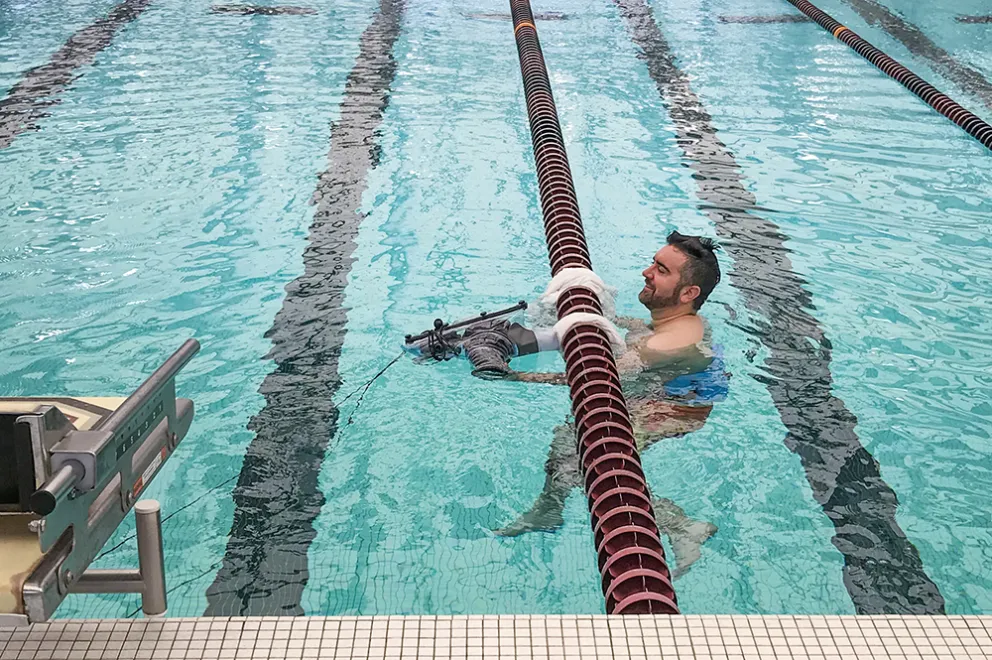
(photo by Brian Ness) Mark in the pool with the complete setup. The sync wires to the monolights are visible at the left of the frame.
One of the White Lightings had a 2'x3' softbox to light up Professor Ingram and the other White Lightning with barn doors on it was pointed down toward the swim lane to light the swimmer up. I manually focused the lens and gaff taped down both the focus and zoom rings before sealing up the camera and getting in the pool. The f9 aperture allowed me to stay focused within a certain zone in case the professor or I changed distance. Another challenge was keeping the lens exactly half below and above the water. Small ripples in the water would either block the whole lens so you would only see inside the pool or the ripples would dip, exposing the lens above the water line so that I would lose the view under the water. Fogging inside the Ewa bag was also an issue with trying to maintain sight of the live view on the back of the camera.
Keeping all of these things in mind, I also had to watch the timing of the swimmer as she swam laps and try to time it where she was in the frame as this was not a composite image but shot all in one frame.
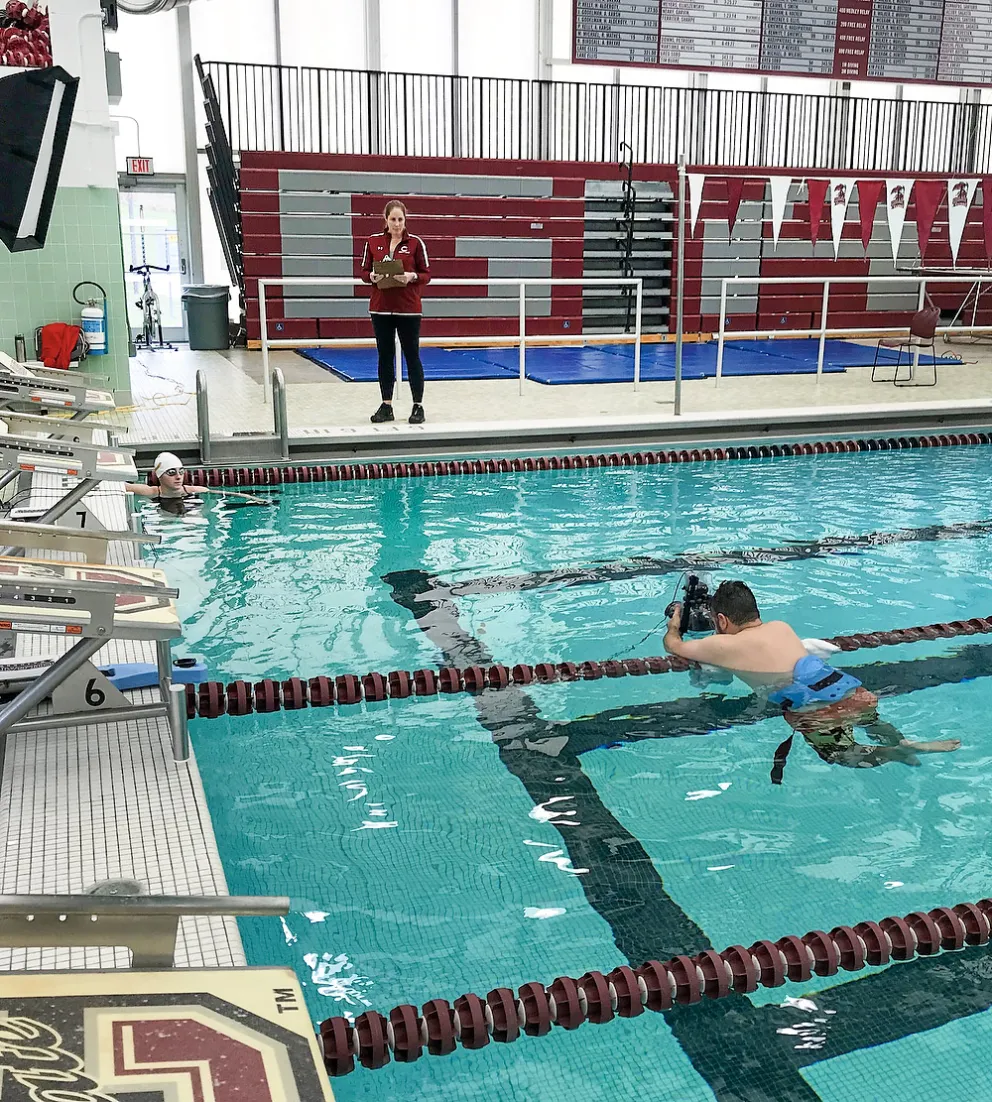
(photo by Aleta Mayne) After much testing, all the pieces in place.
POST:
I first ran the photo through Lightroom to do basic cropping, toning, and sharpening. It was then exported as a .DNG and opened in Photoshop to do more fine tuned editing, dodging, and burning. There were a couple things in the left of the image that I had to remove: A few items on a bench next to a white fire extinguisher as well as an exit sign above the door in the background. During normal circumstances while making portraits I’m pretty good about seeing distractions in the frame and then moving them. In this case because of all the logistical challenges, my attention to detail was a little absent in that moment.

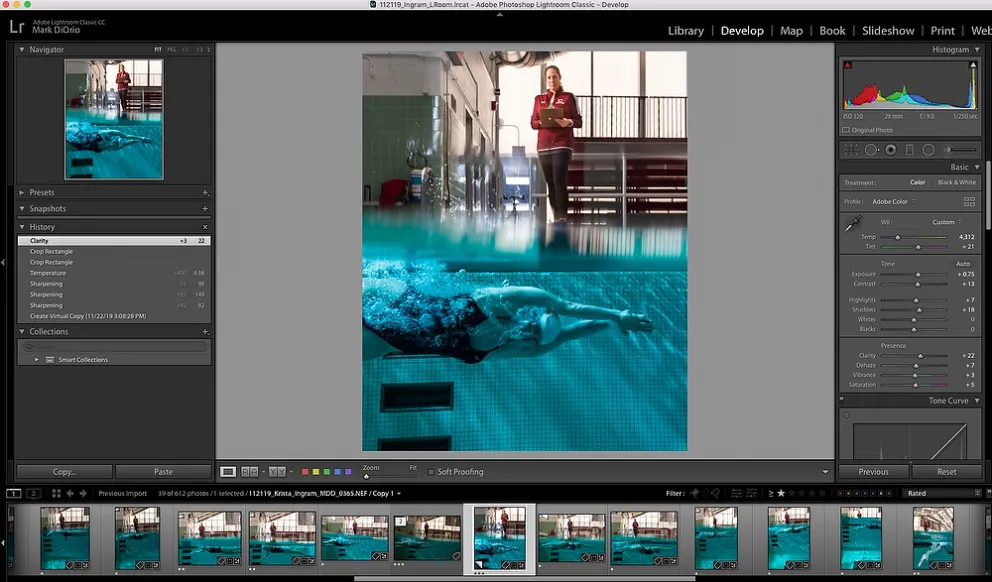
The contact sheet and Lightroom settings
What (if anything) would you do differently if you could re-shoot this today?
It bothered me that there wasn't a lot of light on the left side of the professor and there was no easy or safe way to hang a light over the pool. If I had to do it over again I would have stuck a reflector on a boom out over the pool to bounce some of the light from the 2'x3' softbox back into the shadow side of the professor. I also would have at least tested a set of Pocket Wizards before going straight to optical slave units.
Where do you look for feedback, inspiration and/or motivation?
Photographers I draw inspiration from include Gregory Heisler, Joe McNally, Arnold Newman, Gregory Crewdson, Annie Leibovitz, Gordon Parks, and also directors David Lynch and Stanley Kubrick. I often like to watch films and pay attention on how the scenes are lit, the color temperature of the light and where the light is coming from. Feedback is honestly something I need a lot more of. I often get so wrapped up with the duties of what I have to get done at work that I don't set aside time to reach out to other professionals for feedback.
What would your dream job/project be?
If I was financially independent I would set out across the country with the sole mission of making environmental portraits in the various landscapes, urban and suburban settings along with the sub-communities that define who we are as a nation. Portraiture is the one thing that I've always been drawn back to.
_______________________________________________________________________________
“What word looks the same backwards and upside-down? ‘SWIMS’” (not really a joke, but it’s kinda cool…) Thanks for reading the blog, stories, suggestions, feedback always welcome. Email editor Matt Cashore, mcashore@nd.edu. Follow UPAA on Instagram, too!